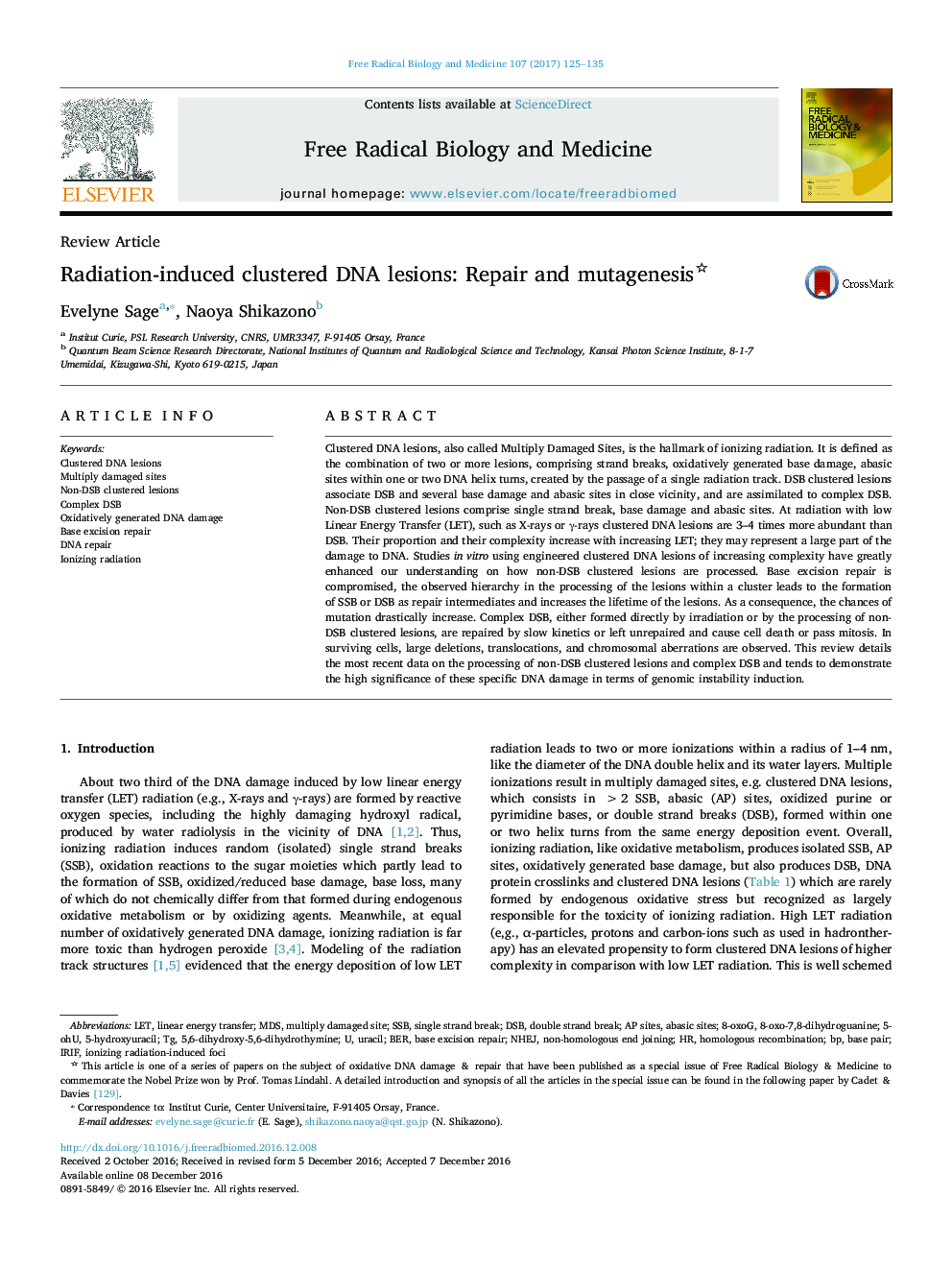| کد مقاله | کد نشریه | سال انتشار | مقاله انگلیسی | نسخه تمام متن |
|---|---|---|---|---|
| 5501812 | 1534936 | 2017 | 11 صفحه PDF | دانلود رایگان |

- Clustered DNA lesions are a hallmark of ionizing radiation.
- Clustered DNA lesions consists of >2 oxidatively generated base damage, abasic sites, SSB or DSB within 10-40Â bp.
- Complexity of clustered DNA lesions increases with increasing radiation LET.
- Incomplete repair at non-DSB clusters may result in DSB formation.
- Clustered DNA lesions are slowly and inefficiently repaired, leading to genome instability.
Clustered DNA lesions, also called Multiply Damaged Sites, is the hallmark of ionizing radiation. It is defined as the combination of two or more lesions, comprising strand breaks, oxidatively generated base damage, abasic sites within one or two DNA helix turns, created by the passage of a single radiation track. DSB clustered lesions associate DSB and several base damage and abasic sites in close vicinity, and are assimilated to complex DSB. Non-DSB clustered lesions comprise single strand break, base damage and abasic sites. At radiation with low Linear Energy Transfer (LET), such as X-rays or γ-rays clustered DNA lesions are 3-4 times more abundant than DSB. Their proportion and their complexity increase with increasing LET; they may represent a large part of the damage to DNA. Studies in vitro using engineered clustered DNA lesions of increasing complexity have greatly enhanced our understanding on how non-DSB clustered lesions are processed. Base excision repair is compromised, the observed hierarchy in the processing of the lesions within a cluster leads to the formation of SSB or DSB as repair intermediates and increases the lifetime of the lesions. As a consequence, the chances of mutation drastically increase. Complex DSB, either formed directly by irradiation or by the processing of non-DSB clustered lesions, are repaired by slow kinetics or left unrepaired and cause cell death or pass mitosis. In surviving cells, large deletions, translocations, and chromosomal aberrations are observed. This review details the most recent data on the processing of non-DSB clustered lesions and complex DSB and tends to demonstrate the high significance of these specific DNA damage in terms of genomic instability induction.
128
Journal: Free Radical Biology and Medicine - Volume 107, June 2017, Pages 125-135